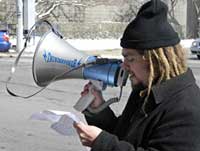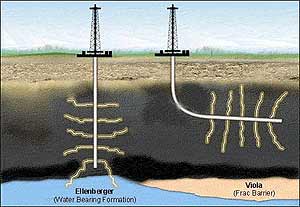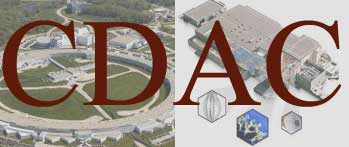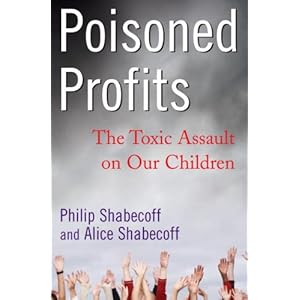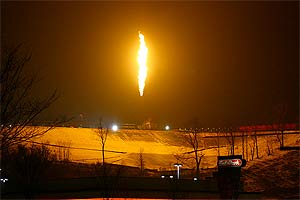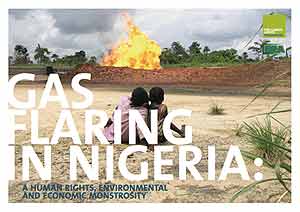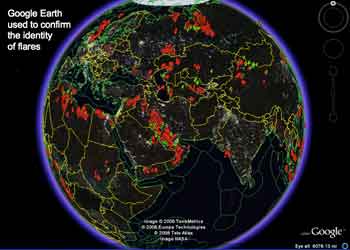Biblio
Americans overwhelmingly support government protection of the environment and consumers, a series of new polls shows. The findings come as efforts to enforce and expand regulation face increasingly hostile rhetoric from conservatives and industry representatives in Washington.
A new Society for Human Resource Management/National Journal Congressional Connection Poll (National Journal poll) found wide public support for legislation intended to limit climate-altering greenhouse gas emissions and to reform U.S. energy policy.
Sixty-five percent of poll respondents said they would support a bill that would cap greenhouse gas emissions. The same poll, conducted from July 29 to Aug. 1, found that 78 percent favor requiring utilities to produce more energy from renewable sources.
The House passed a climate and energy bill in June 2009. Senators have introduced several climate bills, but prospects for passage in 2010 appear dim.
See: Food and Water Watch
Protestors outside the Buffalo offices of the Department of Environmental Conservation today called for an executive order by Governor Andrew Cuomo to define fracking fluid as a hazardous waste and ban its treatment by municipal facilities...
Can local facilities adequately treat fracking fluid?
Small local facilities cannot adequately purify fracking fluid because it contains hundreds of chemicals, including known carcinogens, according to Rita Yelda of the Buffalo chapter of Frack Action, which organized the protest.
Yelda says water is also at risk because layoffs at the DEC could compromise the agency’s work to address fracking issues.
Frequently updated (daily) Pennsylvania blog by Michelle.
See: Wednesday, May 12, 2010. "New blog telling our stories"
Elizabeth Berkowitz, blogger for "How Should We Do The Mountain?" (and whom Protect the Endless Mtns recently joined forces with us on our Facebook page), has a fantastic new blog entitled "Faces of Frackland." Her new blog tells the stories of 20+ people and growing--stories documenting how the natural gas industry which has invaded our state is affecting actual local residents. For her efforts, Elizabeth was recently interviewed on WENY.

Diametrically opposed viewpoints on the Marcellus Shale boom competed for attention Tuesday with Pittsburgh City Councilman Doug Shields seeking a citywide ban on natural gas drilling and former Gov. Tom Ridge hailing the industry's "transformative opportunity" for Pennsylvania.
Despite questions about the legality of a ban, Mr. Shields unveiled a bill that would prohibit gas extraction anywhere in the city, even if drilling companies have already acquired leases from property owners. Speaking at a morning news conference at the City-County Building, Mr. Shields said drilling hearkened a return to Pittsburgh's polluted industrial past...
Last month, Mr. Ridge and his two consulting firms received a one-year, $900,000 contract to serve as strategic advisers to the Marcellus Shale Coalition, a Cecil-based trade group. However, the former two-term governor said he was approaching the job with the interests of his former constituents in mind...
...Mr. Shields described drillers as "quick-buck artists"; criticized their "paid mouthpieces," including Mr. Ridge; and said the city wouldn't be treated like a "colony" of a state government that puts the drilling industry's interests ahead of the people's. He also lashed out at Mayor Luke Ravenstahl, who opposes a citywide ban because of the economic development potential of gas extraction.
"I understand every government is strapped for cash, but that's not a reason to degrade the quality of life in our city and in our neighborhoods," he said.
See: Know Your Enemy | John Cole Cartoons
See: Pa. Governor Apologizes for Tracking Enviro Extremists, but Questions Remain - ProPublica
[At the Cornell 2011 Energy Conference]...Ithaca attorney Helen Slottje, from the Community Environmental Defense Council, addressed the nature of property rights.
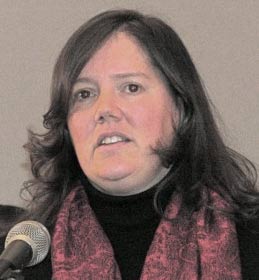
Helen Slottje
“People often say, ‘It’s my property and I can do anything I want to,’” she said, adding that there is an overarching understanding of public welfare. In addition, property ownership does not grant a person the right to use his property in a manner that interferes with another’s use of his land.
“Each landowner has the right to quiet enjoyment of his property,” Slottje said. And the rights property owners have over activities conducted on their land change with time.
“A very fundamental property right is the right to exclude,” Slottje said. But New York law allows compulsory integration: the pooling of unleased landowners into drilling units when 60 percent of the land in a unit is leased.
When drilling into conventional reservoirs, where gas and oil flow from unleased land to the well, compulsory integration makes sense. But in shale, drillers must break the rock to release gas and that, said Slottje, involves a trespass.
This diagram, from Petrocasa, explains the widely held gas industry view, "Horizontal drilling also has less impact on the environment. With horizontal drilling, it's possible to extract gas from property adjacent to the well. That means that natural gas can be removed from under property without being on the surface of the land." (Neil Zusman 2011-04-20). For property owners who don't lease, how is this a good thing?
“When you are integrated, you are left with no right to exclude,” Slottje said. “You are left with toxic compounds beneath your land and you are not even compensated at market value.” [At this time integrated landowners are not paid for use of the land and receive the lowest possible royalty, 12.5 percent.]
Slottje warned municipal officials to avoid getting trapped into thinking they have to provide road use agreements. In a 1969 case, the courts found that a corporation’s claim to the right to profit was not greater than the residents’ right to not be impacted. What that means, she explained, is that no corporation has the right to use local residential roads for high-impact industrial traffic. New York law implies that communities can say “no” to heavy trucks, preserving residential roads for local use.
The biggest problem Slottje sees facing municipalities is the increased erosion of enforcement of environmental regulations. “So we’re swinging back to protecting the environment through property rights and home rule,” she said.
See: Cornell 2011 Energy Conference (New!)
See: Spectra Energy Watch
See: State Decision Blocks Drilling for Gas in Catskills
See: There’s Gas in Those Hills
See: Cornell Cooperative Extension (CCE): Landowner Information
See: Proposed gas drilling ban in city wins friends, foes such as Tom Ridge
The Consortium for Materials Properties Research in Earth Sciences (COMPRES) is a community-based consortium whose goal is to enable Earth Science researchers to conduct the next generation of high-pressure science on world-class equipment and facilities.
COMPRES is charged with the oversight and guidance of important high-pressure laboratories at several national facilities, such as synchrotrons and neutron sources.
COMPRES is supported by the Division of Earth Sciences at the National Science Foundation.
Goncharov, Alexander. “Unanswered Questions in Deep Carbon Research” presented at the 2009 Annual Meeting keynote | Sloan Deep Carbon Cycle Workshop, Carnegie Institution, Geophysical Laboratory | Washington, D.C., May 15, 2008.
A. Kolesnikov, et al., "Methane-derived hydrocarbons produced under upper-mantle conditions". Nature Geosci., 2, 566-570 (2009).
"Our results support the suggestion that hydrocarbons heavier than methane can be produced by abiogenic processes in the upper mantle."
Recent work carried out at Carnegie/DOE Alliance Center (CDAC) suggests that substantial amounts of the hydrocarbon material could exist in the deep Earth and be formed by inorganic (or abiogenic) processes. These hydrocarbons, which include natural gas and petroleum, could migrate from the mantle to the near-surface region and contribute to 'fossil fuel' reserves. Read more about the work of Alexander Goncharov and colleagues from Sweden and Russia here.
A number of chemical reactions have previously been considered as a potential mechanism for hydrocarbon genesis, but they were not verified experimentally under conditions relevant to the Earth’s interior.
See: Sloan - Carnegie Institution for Science. 2008. Deep Carbon Observatory Founders Committee Meets: Needs and Opportunities in Deep Carbon Cycle Research.
To date, consideration of the global carbon cycle has focused primarily on near-surface (i.e., relatively low-pressure and temperature) phenomena, with the tacit assumption that oceans, atmosphere and shallow surface environments represent an essentially closed system with respect to biologically available carbon.
However, recent data and theoretical analyses from a variety of sources suggest that this assumption may be false.
See: Sloan - Carnegie Institution for Science. 2009. Hydrocarbons in Deep Earth?
The oil and gas that fuels our homes and cars started out as living organisms that died, were compressed, and heated under heavy layers of sediments in the Earth’s crust. Scientists have debated for years whether some of these hydrocarbons could also have been created deeper in the Earth and formed without organic matter. Now for the first time, scientists have found that ethane and heavier hydrocarbons can be synthesized under the pressure-temperature conditions of the upper mantle —the layer of Earth under the crust and on top of the core. The research was conducted by scientists at the Carnegie Institution’s Geophysical Laboratory, with colleagues from Russia and Sweden, and is published in the July 26, advanced on-line issue of Nature Geoscience.
Directed Energy Drilling (from MIT)
Mechanical drilling technologies are fully mature. New approaches are needed to make future major advances in increasing access to and reducing costs for underground energy resources...
...There may be other paths to open well stabilization, unimaginable by current mechanical drilling experience that could make possible record penetration into the Earth’s crust with directed energy sources.
The technology that has been developed by DOE and the world wide fusion energy research community to heat plasmas to 300 million degrees Centigrade opens up new possibilities for drilling that should be explored. (Woskov,Cohn 2009)
See: Center for Dark Energy Biosphere Investigations (C-DEBI)
Gold, Thomas. 1998. The Deep Hot Biosphere : The Myth of Fossil Fuels. New York: Springer | Copernicus, November 6.
Woskov, P., and D. Cohn. Millimeter Wave Deep Drilling For Geothermal Energy, Natural Gas and Oil. Annual Report 2009. Plasma Science and Fusion Center: Massachusetts Institute of Technology, September 2009.
In a 5-4 decision, the Supreme Court held that environmentalists' lacked standing to challenge a Forest Service regulation limiting public involvement in timber sales decisions. Priscilla Summers v. Earth Island Institute, et al.,__U.S.__(No. 07-463, March 3, 2009).
The decision found that respondents’ argument that they have standing because they suffered procedural injuryi.e., they have been denied the ability to file comments on some Forest Service actions—fails because such a deprivation without some concrete interest affected thereby is insufficient to create Article III standing.
Justice Scalia, writing for the majority, stated "Accepting an intention to visit the National Forests as adequate to confer standing to challenge any Government action affecting any portion of those forests would be tantamount to eliminating the requirement of concrete, particularized injury in fact."
The following is a link to the Court's opinion: http://www.supremecourtus.gov/opinions/08pdf/07-463.pdf
Coalbed Methane (CBM) Develoment in Wyoming's Powder River Basin is Transforming the Landscape.
Wyoming's Powder River Basin is experiencing the largest mineral boom in Wyoming history. Coalbed methane (CBM) gas development in the Powder River Basin has been characterized by industry as the "hottest natural gas play" in North America, making CBM development the greatest environmental and cultural threat Wyoming has faced in decades.
This "gold rush" style pursuit of CBM is presenting enormous challenges for urban and rural citizens, ranchers and farmers, and impacted municipalities.
The Powder River Basin Resource Council has responded by providing landowners with information on how to protect their property through surface access and damage agreements (See Help for Surface Owners).
We have joined forces with other groups and landowners to oppose the damaging discharge of billions of gallons of water. EPA is now requiring additional evidence and signatures from landowners to ensure that discharges are truly beneficial.
Our appeal of discharge permits has halted the discharge of any new water into the Powder River drainage or the Tongue River drainage. Industry's "quick fix" solution has been to build large waste pits to store the water can lead to salt and sediment buildup, potential contamination of shallow aquifers and acreage out of production.
See Additonal Information and Concerns over Coalbed Methane Development in the Powder River Basin.
See C-Span Book TV Oct. 2, 2004. Bushwacked: Life in George W. Bush's America. Chapter: "Dick, Dubya, and Wyoming Methane." (152)
Colorado School of Mines has estimated the amount of gas that might be developed in the U.S. Golden, Colorado, June 18, 2009. See also: U.S Energy Information Administration. (2009). Annual Energy Outlook Early Release Overview.
Get an in-depth pollution report for your county, covering air, water, chemicals, and more. Enter your zip code for local information.
Take Action: Oppose EPA's efforts to weaken pollution reporting
 |
Who are the top polluters in the U.S.? |
We think American citizens have a right to know what toxic chemicals are being released into their communities. But the EPA recently proposed to limit the information that companies are required to disclose about the hazardous chemicals they release into our environment.
By reducing the reporting requirements of its Toxics Release Inventory program, the EPA would take away an important tool for protecting public health and reducing industrial pollution.
Supported by Green Media Toolshed.
See: Big Polluters Freed from Environmental Oversight by Stimulus - The Center for Public Integrity
State Assemblywoman Barbara Lifton wants to slow it down. Sen. Thomas Libous is for speeding it up. Assemblywoman Donna Lupardo is torn between extremes.
Elected officials taking a position on Marcellus Shale development are facing strident demands from stakeholders who could become rich, go broke or possibly abandon hope, depending on Albany's response...
...Deborah Goldberg, an attorney with Earthjustice, an environmental law firm, said the final SGEIS must include substantial changes to account for the cumulative effect of drilling thousands and perhaps tens of thousands of Marcellus wells in New York. If not, the firm will help spearhead a legal challenge, most likely in state Supreme Court in Albany.
That would involve filing an Article 78 Proceeding challenging the DEC's adherence to the State Environmental Quality Review Act.
A television commercial about global warming from Environmental Defense Fund. Public service announcement (PSAs) designed to urge Americans to take advantage of mass transit, carpooling and biking to combat global warming.
Read the Appendix if you are concerned about what you can do to protect your children's health from our toxic environment.
Philip Shabecoff is an environmental writer based in Massachusetts. He was a reporter for the New York Times for more than 30 years, and founded the online environmental news service Greenwire in 1991 and served as its publisher until 1996.
Alice Shabecoff served in the 1970s as executive director of the National Consumers League, the country’s oldest consumer organization, and in the 1980s as founder and executive director of the national nonprofit Community Information Exchange, an information service for the community development sector. As a freelance journalist focusing on family and consumer topics, her work has appeared in The New York Times, The Washington Post, The Christian Science Monitor, among other publications. She currently serves as a member of the Board of Directors of the Birth Defects Research Center.
Review From Booklist:
There is a country in which nearly one in three children suffers from some type of chronic disease and whose childhood cancer rates have risen some 67 percent in the last 50 years. What is this country doing wrong to cause so many of its children such suffering?
The country is the U.S., and the Shabecoffs, nationally known journalists, believe they know exactly what is causing our children so much illness. Sure, they say, lifestyle choices (bad diet, secondhand smoke, etc.) can account for a certain amount of ill health.
The real malefactor, however, is greedy American industry, aided and abetted by a shortsighted economic system and a government that turns a blind eye when faced with damning scientific evidence of true crime—the crime of knowingly poisoning children, beginning when they are the most vulnerable: in utero.
See: What is the National Children's Study?
See: Fracking: Implications for Human and Environmental Health
See: The Case for a Truth and Reconciliation Commission on Toxic Hazards
Chesapeake Energy Flares Barnett Shale Gas Well in Trinity Trai, posted by TxSharon - Sharon Wilson - http://bluedaze.org
Poison Fire-The Movie below. Gas flares are visible from space.
"Whose woods these are I think I know"...
If you plan to stop by these woods on a snowy evening bring some marshmallows and expect an evening sunburn. There's a chance your treats will be toxic.
A recent study from Nigeria on mice associates flaring with respiratory and blood problems. Earlier studies from the Worldbank, the U.S., Canada, Climate Justice and a 2002 Schlumberger report note the importance of eliminating flaring to maintain fragile ecosystems and human health.
Why wait until there are deaths and illness to end industrial practices that waste money and human life? As long as the air or groundwater pollution doesn't clog their drill bits, gas industry engineers say these practices are safe.
Marcellus Protest posts an eyewitness account of gas flaring near a consumer shopping mall in Pittsburgh, where the noise and heat from a gas flare runs 24/7.
Can you see how Pennsylvania is starting to look more and more like Nigeria? (Neil Zusman, 2011-01-22.)
See: Anger grows across the world at the real price of 'frontier oil'
See: Fracking at the (Pittsburgh Mills Mall) | Marcellus Shale Protest 2011-01-10
Sharon Wilson of Bluedaze, Drilling Reform for Texase, recently had a "debate" on her YouTube posting, "Chesapeake Energy Flares Barnett Shale Gas Well in Trinity Trail," regarding flaring.
Sweet gas (natural gas that does not contain significant amounts of hydrogen sulfide) flaring has a longer history in Nigeria. According to the Daily Independent:
The Canadian Public Health Association (CPHA) has identified not less than 250 toxins from the gas flared from fossil fuels.
Film Synopsis
In 1956, Shell drilled the first oil well in the village of Olobiri, in the African Niger Delta. Since then, massive quantities of black gold have been pumped out of the ground there, and nobody seems to worry about a little spillage: lots of excess oil gets dumped or spilled, and gas flaring, or the burning of natural gas, takes place as well.
Poison Fire gives the floor to the inhabitants of the Niger Delta. No one sees anything positive in Shell's activities. Cancer, asthma, and miscarriages are all consequences of the pollution caused by the oil giant, and fish, slugs and snakes are dying out.
A group of environmental activists travel to Shell Headquarters in the Netherlands, where CEO Jeroen van der Veer politely addresses them at the entrance. He promises to launch a plan that will stop gas flaring, a practice that has been declared illegal by the Benin City Court. But how can the behaviour of a wealthy multinational realistically be corrected when Nigeria's own authorities are out-and-out corrupt?
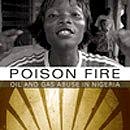 Friends of the Earth International website.
Friends of the Earth International website.
Read the report:
Environmental Rights Action, Friends of the Earth Nigeria. "Gas Flaring in Nigeria". Climate Justice. June 2005. (PDF 36 pp.)
See: Bluedaze Video. Chesapeake Energy Flares Barnett Shale Gas Well in Trinity Trail.
See: Chevron articles on Mixplex.
Daily Independent. "Enforcing the gas flaring deadline." Daily Independent. Lagos, Nigeria. August 9, 2010. Also available from the Norwegian Council for Africa.
See: The Case of Chevron.
See: World Bank. Gas Flaring Around the World. (2009). (Is the World Bank forever tainted by Lawrence Summers?).
A view of global gas flaring based on satellite observations: a joint effort between the US National Oceanic and Atmospheric Administration and the World Bank-led Global Gas Flaring Reduction partnership (GGFR)
See: Global Gas Flaring Identification in Google Earth
Download .kmz files for country of your choice. They will be addded to your Google Earth places. You can see the massive gas field with gas flaring adjacent to the Hobbs Public Schools and the Junior College in New Mexico.
See: Cooperative Institute for Research in the Environmental Sciences, University of Colorado. (CIRES)
Read these reports:
Elvidge, C.D. A Sixteen Year Record of Global Natural Gas Flaring Derived From Satellite Data. Earth Observation Group NOAA National Geophysical Data Center, May 18, 2010. (PDF)
Elvidge, C. D, D. Ziskin, K. E Baugh, B. T Tuttle, T. Ghosh, D. W Pack, E. H Erwin, and M. Zhizhin. “A Fifteen Year Record of Global Natural Gas Flaring Derived from Satellite Data.” Energies 2, no. 3 (2009): 595–622 (PDF).
Otitoloju, Adebayo, and Jemina Dan-Patrick. “Effects of gas flaring on blood parameters and respiratory system of laboratory mice, Mus musculus.” The Environmentalist 30, no. 4 (October 2010): 340-346. (free preview only)

"...And miles to go before I sleep"
Robert Frost. Stopping By Woods on a Snowy Evening (1923). New Hampshire
"...Walter Hang, president of Ithaca-based Toxics Targeting Inc., has been working with Pulteney residents on the wastewater issue. Even with Chesapeake's decision, the Pulteney saga proves this is a problem that has not been adequately addressed by DEC and others, Hang said.
-----"That was obviously a ridiculously bad location to put a deep well injection facility," he said. "Why would you ship that water hundreds of miles to the middle of nowhere and move it to within a mile of this historic jewel of a Finger Lake?""








